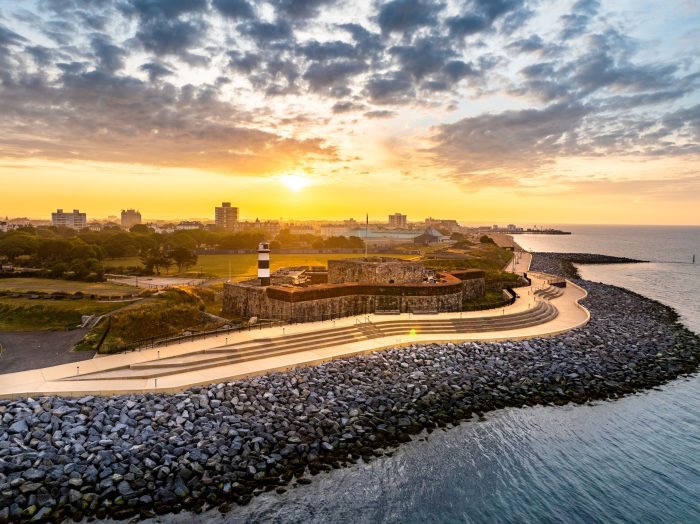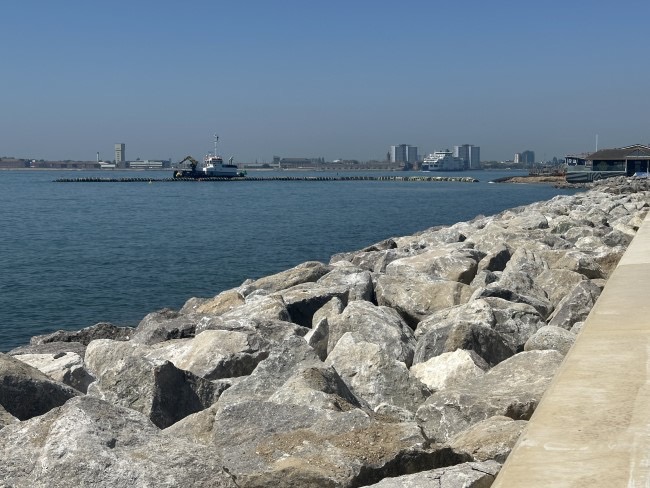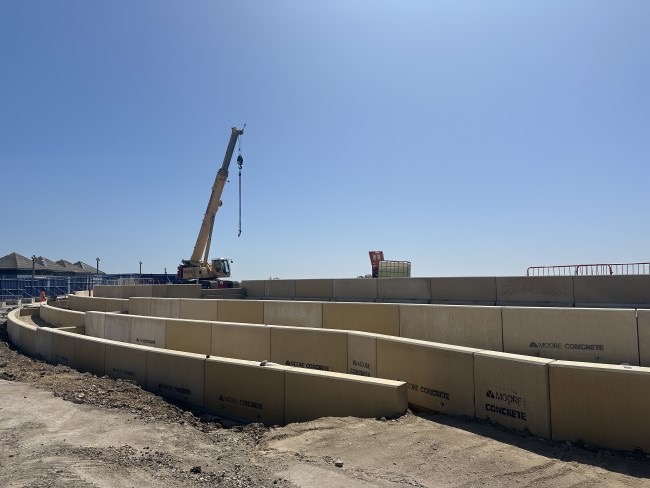
A Coastal Gem at a Crossroads
Enter the Southsea Coastal Scheme, a £180 million lifeline and the UK’s largest council led coastal defence project. Spanning 4.5km from Old Portsmouth to Eastney, this six phase endeavour isn’t just about barriers and concrete it’s a visionary blend of engineering and empathy, safeguarding 10,000 homes, 700 businesses, and centuries of stories.
Southsea’s charm is undeniable a tapestry of Victorian elegance, wartime history, and seaside allure. But as climate change tightens its grip, this iconic stretch of Portsmouth’s coastline faces an existential threat. Rising tides, crumbling defenses, and intensifying storms have turned the seafront into a battleground between heritage and survival.
Why Southsea? The Urgency of Now
Climate change isn’t a distant spectre here. Sea levels around Portsmouth are projected to rise by up to 1.15 meters by 2100, while storms like 2020’s Ciara have already unleashed chaos, costing over £1 million in emergency repairs. The existing defenses, some dating to the 1930s, are simply outmatched.
“Without action, much of Southsea could be underwater within decades,” warns Councillor Steve Pitt, Portsmouth’s Cabinet Member for Culture, Leisure, and Economic Development. “This scheme isn’t optional it’s existential.”

What’s at Stake: More Than Bricks and Mortar
The project’s scope is staggering, but its true value lies in what and who it protects:
- Communities: Over 10,000 households, from weathered fishermen’s cottages to modern flats.
- Economy: 700 businesses, including seafront cafes, historic pubs, and the bustling Portsmouth Marina.
- History: 74 listed structures, 3 ancient monuments, and the Grade I listed Naval Memorial, where the names of 24,000 WWII sailors are etched in stone.
- Infrastructure: Critical roads like Clarence Esplanade, which links the city to vital emergency services.
“It’s not just about saving buildings,” says local historian Mary Wells. “It’s about preserving the soul of Southsea.”

Engineering with Empathy: Where Heritage Meets Innovation
Balancing modern resilience with historical integrity is no small feat. The council partnered with Historic England, Commonwealth War Graves Commission, and conservation specialists to ensure every stone tells a story:
- Seafront Shelters & Lampposts (Grade II Listed): Meticulously dismantled by heritage craftsmen, these Art Deco gems are being restored to their 1930s glory before rejoining the new promenade.
- Clarence Esplanade Monuments: Six statues, including the iconic “D-Day Soldier,” are being repositioned to enhance visibility, their plinths reinforced with invisible steel cores.
- The Naval Memorial: A redesign of its surrounding landscape mirrors the original 1920s layout, with reclaimed Yorkstone paving and period appropriate benches.
- Long Curtain Moat: A new defensive wall, clad in hand-tooled limestone, stands discreetly before this 18th century Scheduled Monument a silent guardian respecting its elder.
“Every decision is a dialogue between past and present,” explains lead engineer Sarah Turner. “We’re not just building walls; we’re curating legacy.”
Beyond Concrete: Community at the Core
The scheme’s impact extends beyond floodgates. Over 30,000 tonnes of recycled material have been used in construction, while new cycle paths, wheelchair accessible slopes, and tidal pools aim to revitalise public spaces. Local artists have even embedded maritime mosaics into seawall panels.
Yet challenges persist. Phase 3’s discovery of unexploded WWII ordnance near Eastney delayed work, while debates over the promenade’s modernist design sparked fiery town hall meetings. “Change is hard,” admits project lead James Fleming, “but we’ve held 200+ community workshops to listen and adapt.”
The Road Ahead: A Blueprint for Coastal Britain
With Phase 4 already completed the scheme is already a case study in climate resilience. Early projections suggest it will reduce flood risk by 95% for over a century, buying time for Southsea’s next chapter.
As the UK grapples with rising seas, Portsmouth’s approach a fusion of cutting edge engineering, community partnership, and reverence for history offers a template. “Southsea isn’t retreating,” says Councillor Pitt. “We’re reimagining what it means to live by the sea.”
A Tide of Hope
Next time you walk Southsea’s promenade, pause by the Naval Memorial. Below, waves lap against walls designed to outlast us all. It’s a reminder: resilience isn’t just about survival it’s about stewarding beauty and memory into an uncertain future.
The Southsea Coastal Scheme isn’t finished, but its message is clear: even in the face of climate crisis, some tides can still be turned.
Explore More: Visit SouthseaCoastalScheme.org.uk for live updates, virtual tours, and ways to support local heritage initiatives.
